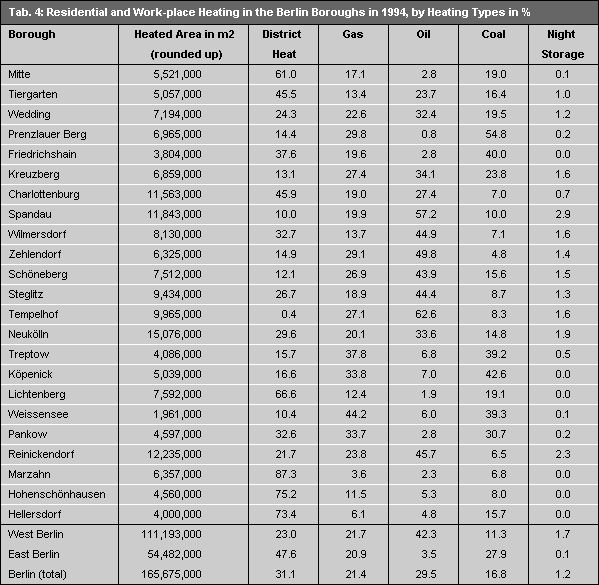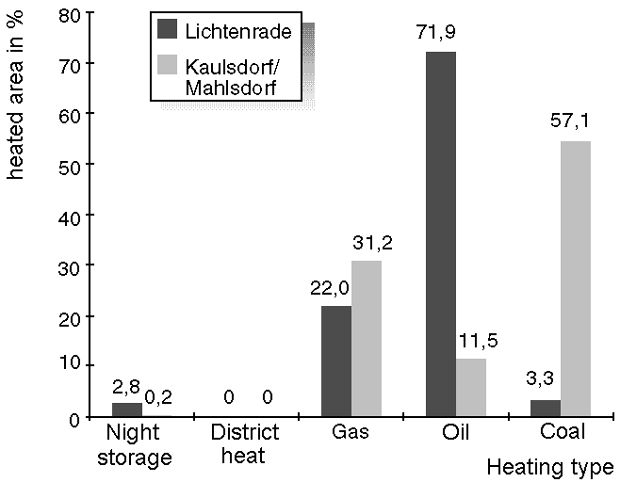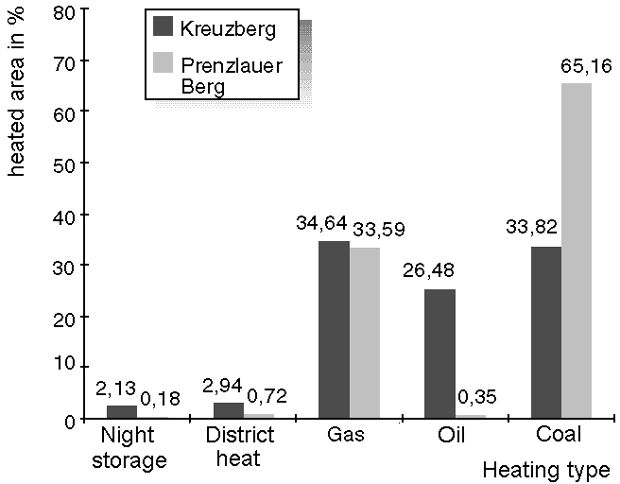The graphic display of the evaluated heating structure data for the residential and work-places in Berlin provides information both on larger-scale contiguous areas and on block-segment areas.
Map 08.01 – Building Heating Supply Areas
The dependence of the fuel use on building structure and location in the city is clear even at the level of the 23 municipal boroughs. There is a clear predominance of coal in the inner city districts, or district heating in the East Berlin boroughs with a high share of large-scale developments (cf. Tab. 4).
Map 08.01.1 – District Heating Supply Areas, shows clearly the local proximity of heating plants and heating power plants to their respective service areas. The largest share of the total district heating supply in Berlin is provided by the BEWAG, with a network totaling some 1,000 km. The great majority of the 2,208 blocks provided with district heat show high proportions of district heat supply (greater than 60 %). In the new high-rise residential areas on the outskirts, such as Hohenschönhausen, Marzahn or the Märkisches Viertel, contiguous residential areas are completely provided with district heat. Altogether, the depiction makes clear the Berlin’s leading position in the share of district heat supply Europe-wide. However, there is great potential for additional connection of coal-heated old building at the edge of district-heating-supplied areas.
Map 08.01.2 – Gas Heating Supply Areas, shows the finely meshed distribution of the network over the entire built-up area of Berlin. The proportional shares of the total heated area in the respective statistical blocks are generally between 10 and 40 %. High gas supply shares are evident in only a few blocks, e.g. apartment blocks in Spandau, Zehlendorf, Britz, Reinickendorf, Pankow and Köpenick, as well as individual commercial, administrative and service locations distributed throughout the city. Due to the widespread distribution of natural gas lines in the urban area, a large potential for expansion exists, analogously to that for district heat.
Until the reunification of the two city halves, there was practically no oil-fueled building heating in the eastern part of Berlin. Map 08.01.3 – Oil Heating Supply Areas, which shows the supply situation as of 1993-94, still indicates this fact very clearly. While in the western part of the city, oil-fired heating supply plays a very dominant role (approx. 42 % of the entire heated area of West Berlin), the eastern part (approx. 3.5 % of the entire heated area of East Berlin) so far shows a clear increase only for single-family and duplex house areas (cf. Tab. 4 and Fig. 3).



